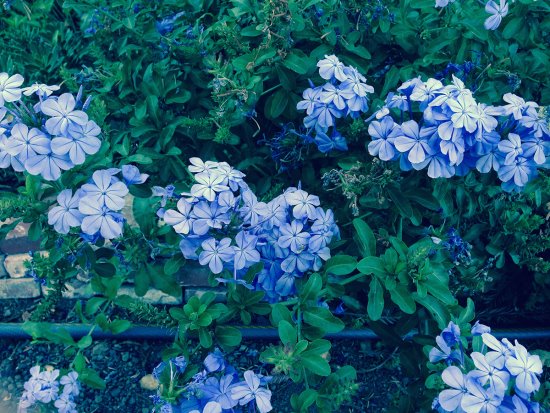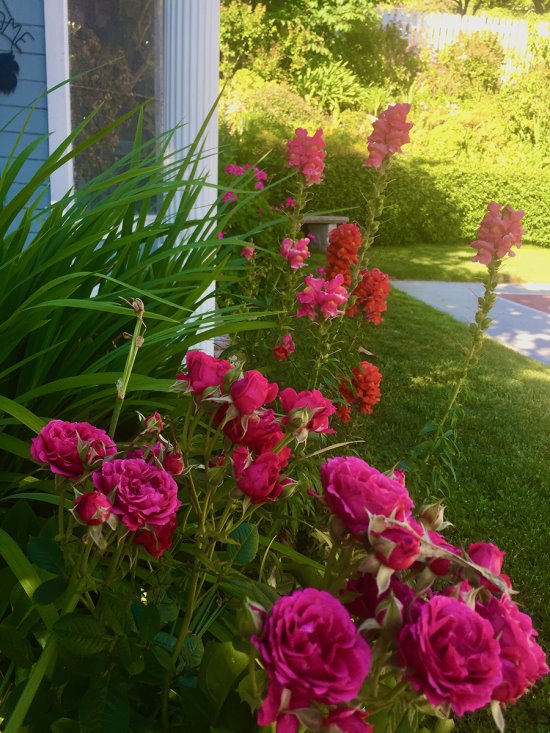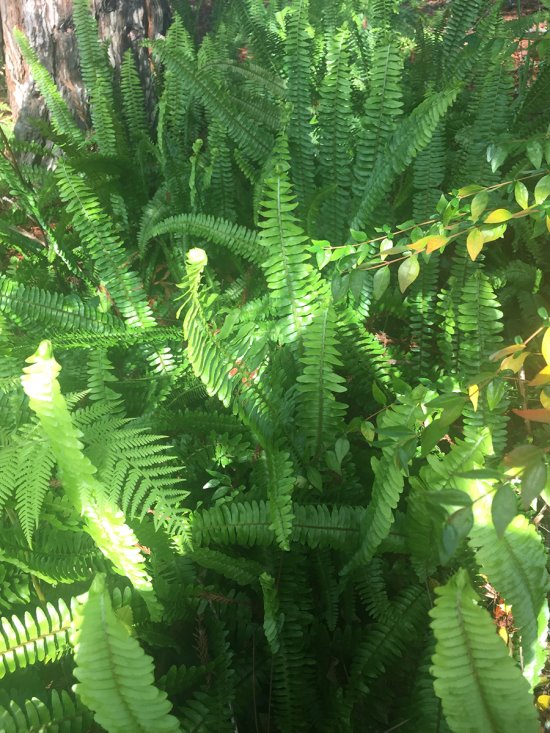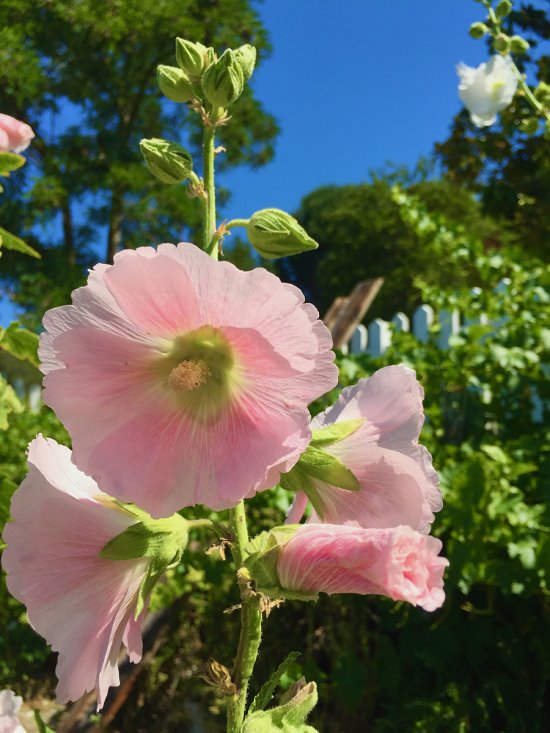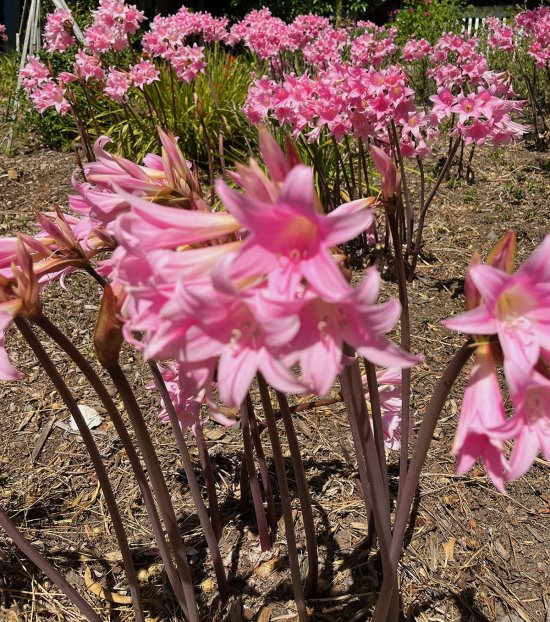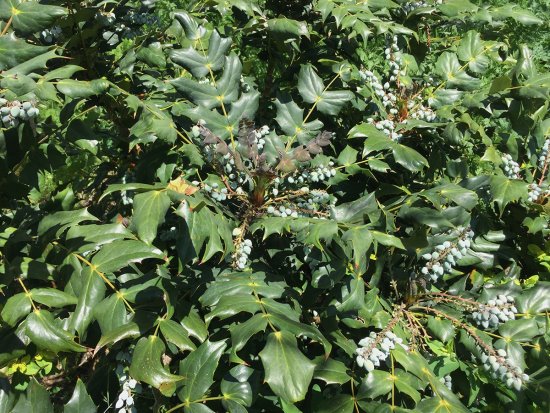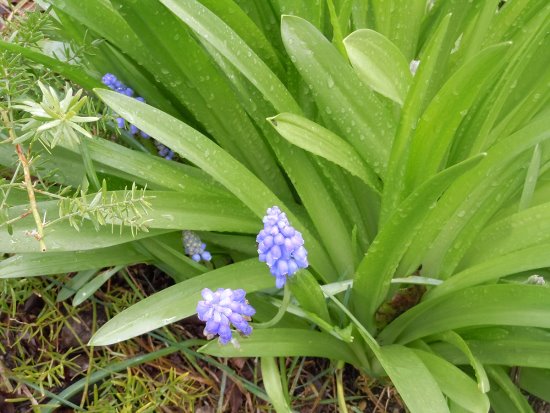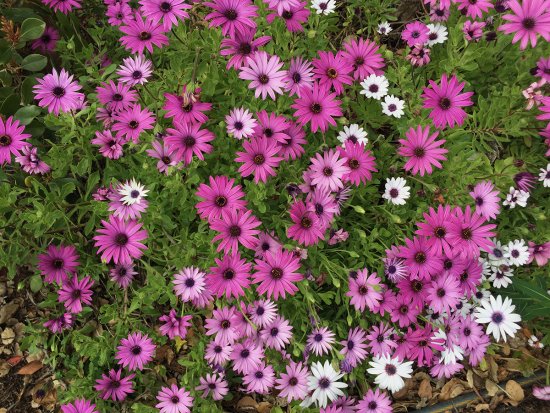 |
|
|
Colorful African daisies. Photos Cynthia Brian
|
|
|
|
|
|
"Flowers have an expression of countenance as much as men or animals. Some seem to smile, some have a sad expression, some are pensive and diffident, others again are plain, honest, and upright." ~ Henry Ward Beecher
 And may I add . some are very poisonous!
And may I add . some are very poisonous!
 Since I was a child growing up on a farm, I have adopted and raised every type of creature, both domesticated and wild. Dogs, cats, rabbits, squirrels, chickens, ducks, geese, cows, horses, sheep, ponies, deer, birds, pigs, goats and more roamed our barnyards. My family never allowed indoor pets, yet many of our animal friends followed us around our expansive gardens as we did our chores, sometimes nibbling on roses or gnawing on low voltage wires, but never getting sick. It seemed that our animals had an innate knowledge of what plant was poisonous and they stayed clear of the oleander, digitalis, hemlock, and hundreds of other toxic specimens.
Since I was a child growing up on a farm, I have adopted and raised every type of creature, both domesticated and wild. Dogs, cats, rabbits, squirrels, chickens, ducks, geese, cows, horses, sheep, ponies, deer, birds, pigs, goats and more roamed our barnyards. My family never allowed indoor pets, yet many of our animal friends followed us around our expansive gardens as we did our chores, sometimes nibbling on roses or gnawing on low voltage wires, but never getting sick. It seemed that our animals had an innate knowledge of what plant was poisonous and they stayed clear of the oleander, digitalis, hemlock, and hundreds of other toxic specimens.
 Recently I was hired by a lovely client to provide a colorful garden design for the family's backyard. The caveat to the project was that their sweet puppy ate anything growing. While we walked around the yard, the pooch did indeed sample everything. When I submitted my suggested planting list, I was confident that my choices would be fine with a plant-eating pet.
Recently I was hired by a lovely client to provide a colorful garden design for the family's backyard. The caveat to the project was that their sweet puppy ate anything growing. While we walked around the yard, the pooch did indeed sample everything. When I submitted my suggested planting list, I was confident that my choices would be fine with a plant-eating pet.
 I was wrong. Several of my choices could have caused health issues depending on the amount consumed, potential allergies, or other matters.
I was wrong. Several of my choices could have caused health issues depending on the amount consumed, potential allergies, or other matters.
 In general, plants that are considered toxic or poisonous to people are poisonous to most animals. For example, although humans enjoy many types of mushrooms, there are numerous lethal mushrooms when ingested. If your pet nibbles on a mushroom in the wild, it must be treated as toxic. There have been instances where a plant that is safe for humans has been poisonous to an animal. Often, animals eat larger amounts of the plant resulting in a greater problem.
In general, plants that are considered toxic or poisonous to people are poisonous to most animals. For example, although humans enjoy many types of mushrooms, there are numerous lethal mushrooms when ingested. If your pet nibbles on a mushroom in the wild, it must be treated as toxic. There have been instances where a plant that is safe for humans has been poisonous to an animal. Often, animals eat larger amounts of the plant resulting in a greater problem.
 As I went back to the drawing board to research a list of non-ruinous flowers, it became apparent that contradictions and confusion reign. In one report, a specimen was listed as safe, and in another, it was listed as dangerous. It became important to investigate the Scientific name as well as the Family name. For example, 1,000 species and over 10,000 hybrids of begonia, Scientific name: Begonia spp., Family: Begoniaceae are toxic, while climbing begonia known as Rex Begonia, Scientific name: Cissus dicolor, Family: Vitaceae are fine. The health, age, and size of the pet as well as how much they devour is a factor in whether your pet will be affected. A website that is helpful as a guide for plants that are toxic to dogs is the ASPCA. Visit https://www.aspca.org/pet-care/animal-poison-control/dogs-plant-list.
As I went back to the drawing board to research a list of non-ruinous flowers, it became apparent that contradictions and confusion reign. In one report, a specimen was listed as safe, and in another, it was listed as dangerous. It became important to investigate the Scientific name as well as the Family name. For example, 1,000 species and over 10,000 hybrids of begonia, Scientific name: Begonia spp., Family: Begoniaceae are toxic, while climbing begonia known as Rex Begonia, Scientific name: Cissus dicolor, Family: Vitaceae are fine. The health, age, and size of the pet as well as how much they devour is a factor in whether your pet will be affected. A website that is helpful as a guide for plants that are toxic to dogs is the ASPCA. Visit https://www.aspca.org/pet-care/animal-poison-control/dogs-plant-list.
 After examining numerous sources and talking to experts, my recommendation is to check with your personal veterinarian before landscaping as your doctor knows your pet best. Many plants with no known toxicity could still cause an allergic reaction under the right conditions. The juice or sap from some plants contains oxalate crystals which are shaped like tiny needles that could result in irritation of the mouth, or in severe instances, cause swelling of the throat and breathing difficulties. Exposure to selected juice or sap could cause itching or burning dermatitis. Minor toxicity plants may not cause any symptoms or induce mild vomiting or diarrhea. Major toxicity plants could have serious effects on body organs such as the heart, liver, or kidney. Just as each human reacts individually to stimuli, so do animals. For this reason, a consultation with your veterinarian is advised.
After examining numerous sources and talking to experts, my recommendation is to check with your personal veterinarian before landscaping as your doctor knows your pet best. Many plants with no known toxicity could still cause an allergic reaction under the right conditions. The juice or sap from some plants contains oxalate crystals which are shaped like tiny needles that could result in irritation of the mouth, or in severe instances, cause swelling of the throat and breathing difficulties. Exposure to selected juice or sap could cause itching or burning dermatitis. Minor toxicity plants may not cause any symptoms or induce mild vomiting or diarrhea. Major toxicity plants could have serious effects on body organs such as the heart, liver, or kidney. Just as each human reacts individually to stimuli, so do animals. For this reason, a consultation with your veterinarian is advised.
 Of course, there are other circumstances as well. Roses are considered healthy to eat for people and pets if they have not been treated with pesticides, insecticides, or other chemicals. However, a puncture wound from a thorn could cause irritation and pain in both humans and animals. Does this mean that we don't plant roses?
Of course, there are other circumstances as well. Roses are considered healthy to eat for people and pets if they have not been treated with pesticides, insecticides, or other chemicals. However, a puncture wound from a thorn could cause irritation and pain in both humans and animals. Does this mean that we don't plant roses?
 It's summer and tomatoes, peppers and beans fill many potagers. I've witnessed several friends' pets navigating the garden munching the ripe juicy veggies straight from the vine. The leaves of tomatoes, peppers, and potatoes contain solanine which can cause gastrointestinal distress and a slow heart rate. The beans could cause additional gas while potatoes need to be cooked before eating. Do we not plant vegetables?
It's summer and tomatoes, peppers and beans fill many potagers. I've witnessed several friends' pets navigating the garden munching the ripe juicy veggies straight from the vine. The leaves of tomatoes, peppers, and potatoes contain solanine which can cause gastrointestinal distress and a slow heart rate. The beans could cause additional gas while potatoes need to be cooked before eating. Do we not plant vegetables?
 What about garlic and onions? Plants in the Allium family can cause anemia in animals. Certain literature indicates that plants in this family should not be given to pets. Yet, garlic has been a medicinal food for centuries. It is rich in nutrients that boost immunity to numerous ailments. Our family feeds our animals small amounts of raw garlic as an agent to deter worms and repel ticks. Our pets are always healthy. The level of danger must be weighed by you, individually for your animals in concert with the expertise of your veterinarian.
What about garlic and onions? Plants in the Allium family can cause anemia in animals. Certain literature indicates that plants in this family should not be given to pets. Yet, garlic has been a medicinal food for centuries. It is rich in nutrients that boost immunity to numerous ailments. Our family feeds our animals small amounts of raw garlic as an agent to deter worms and repel ticks. Our pets are always healthy. The level of danger must be weighed by you, individually for your animals in concert with the expertise of your veterinarian.
 I've always considered goats environmentally correct weed-eating and fertilizing animal machines. If you've ever witnessed hundreds of goats clearing a hillside of blackberry bushes, poison oak, and a variety of tall grasses, it's easy to believe that these ruminants can and will consume anything . and everything. Yet, there are over 700 species of plants that could cause toxicity in goats. Fortunately for them, their internal antenna steers them away from the poisonous plants unless starvation is a factor.
I've always considered goats environmentally correct weed-eating and fertilizing animal machines. If you've ever witnessed hundreds of goats clearing a hillside of blackberry bushes, poison oak, and a variety of tall grasses, it's easy to believe that these ruminants can and will consume anything . and everything. Yet, there are over 700 species of plants that could cause toxicity in goats. Fortunately for them, their internal antenna steers them away from the poisonous plants unless starvation is a factor.
 This is a curated list of "safe plants for pets" culled from numerous research. With that being written, remember that you and your vet know your pet the best, so make sure to double-check that your beloved friend won't eat something harmful at home or while traveling.
This is a curated list of "safe plants for pets" culled from numerous research. With that being written, remember that you and your vet know your pet the best, so make sure to double-check that your beloved friend won't eat something harmful at home or while traveling.
 alstroemeria
alstroemeria
 aster
aster
 petunias
petunias
 bee balm
bee balm
 orchid
orchid
 statice
statice
 rosemary
rosemary
 thyme
thyme
 pot marigolds (calendula)
pot marigolds (calendula)
 sage
sage
 catnip
catnip
 basil
basil
 lemon balm
lemon balm
 canna lilies
canna lilies
 camellias
camellias
 fuchsias
fuchsias
 lilac
lilac
 nasturtium
nasturtium
 magnolia bushes (need full sun, purple, pink, white)
magnolia bushes (need full sun, purple, pink, white)
 snapdragons
snapdragons
 star jasmine
star jasmine
 ginger lily
ginger lily
 viburnum
viburnum
 African daisy
African daisy
 cornflower (Bachelor Buttons)
cornflower (Bachelor Buttons)
 rabbit's foot fern
rabbit's foot fern
 sword fern
sword fern
 celosia
celosia
 chervil (French parsley)
chervil (French parsley)
 heuchera (coral bells)
heuchera (coral bells)
 daylilies
daylilies
 Easter lilies
Easter lilies
 gloxinia
gloxinia
 grape hyacinth
grape hyacinth
 baby tears (stonecrop)
baby tears (stonecrop)
 hollyhock
hollyhock
 ice plant
ice plant
 jasmine
jasmine
 crape myrtle
crape myrtle
 mahonia (Oregon grape)
mahonia (Oregon grape)
 plumbago
plumbago
 rose
rose
 scabious (pincushion flower)
scabious (pincushion flower)
 stargazer lily
stargazer lily
 stevia
stevia
 strawberry
strawberry
 sunflower
sunflower
 sweet potato vine
sweet potato vine
 coreopsis
coreopsis
 torch lily (red hot poker)
torch lily (red hot poker)
 impatiens
impatiens

 Currently, my landscape is full of a stunning sea of swaying naked ladies. In the Amaryllis genus, this flowering bulb contains a variety of toxic alkaloids with the most prevalent being lycorine. Again, the lethality posed by pet ingestion is contradictory and the medical literature contains no pet-related cases reported. Fortunately, my pets are not interested in this flower, but if you have animals that are nature nibblers, exercise caution, not only in your garden but when out on walks or hikes with your animals.
Currently, my landscape is full of a stunning sea of swaying naked ladies. In the Amaryllis genus, this flowering bulb contains a variety of toxic alkaloids with the most prevalent being lycorine. Again, the lethality posed by pet ingestion is contradictory and the medical literature contains no pet-related cases reported. Fortunately, my pets are not interested in this flower, but if you have animals that are nature nibblers, exercise caution, not only in your garden but when out on walks or hikes with your animals.
 Do your homework. Keep your plants and pets safe from poisoning. And in case I didn't write this enough, talk to your vet!
Do your homework. Keep your plants and pets safe from poisoning. And in case I didn't write this enough, talk to your vet!
 Happy Gardening. Happy Growing.
Happy Gardening. Happy Growing.
|

